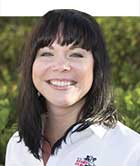
While long-day lighting is commonly touted for up to a 10 percent boost in milk production, lighting strategy in both heifers and dry cows seems to take a backseat.
Research shows that long-day photoperiods, 16 hours of light, 8 hours of dark, for heifers will help increase dry matter intake, making them more feed efficient and allowing heifers to be bred at an earlier age. Breeding at this earlier age will get heifers into the milking herd faster. Kentucky Extension sites "previous research indicate(s) that long-day photoperiods can lead to leaner growth, greater mammary development and lower the age to puberty by an average of one month."
Dry cows on the other hand benefit from the short-day photoperiod, 8 hours of light and 16 hours of dark. This short-day lighting has been demonstrated to lead to greater dry matter intake and higher milk in the next lactation, with one study showing growth of 6.8 pounds per day, along with higher fat and protein yields.
With more dairies milking three times per day, 24 hours per day, we also need to consider the effects of 24 hours of light on our herd. Reproductive performance appears to be the most prominent thing affected by 24 hours of light, and the results are decidedly negative. Studies show it leads to longer days between breedings, more days open and more breedings needed per cow.
That said, to make a comfortable working environment for our employees, yet provide the right amount of lighting for our cows we might explore low intensity red lighting in barns as to not disrupt the photoperiod. Any light 5 foot-candles or less is not perceived by cows.
 The author, Ali Enerson, was the special publications editor, responsible for books, plans, distribution of the e-newsletter and various internal communication pieces. She grew up on a 60-cow dairy in northwest Wisconsin, and is a graduate of University of Wisconsin–Madison with a degree in life sciences communications.
The author, Ali Enerson, was the special publications editor, responsible for books, plans, distribution of the e-newsletter and various internal communication pieces. She grew up on a 60-cow dairy in northwest Wisconsin, and is a graduate of University of Wisconsin–Madison with a degree in life sciences communications. 







